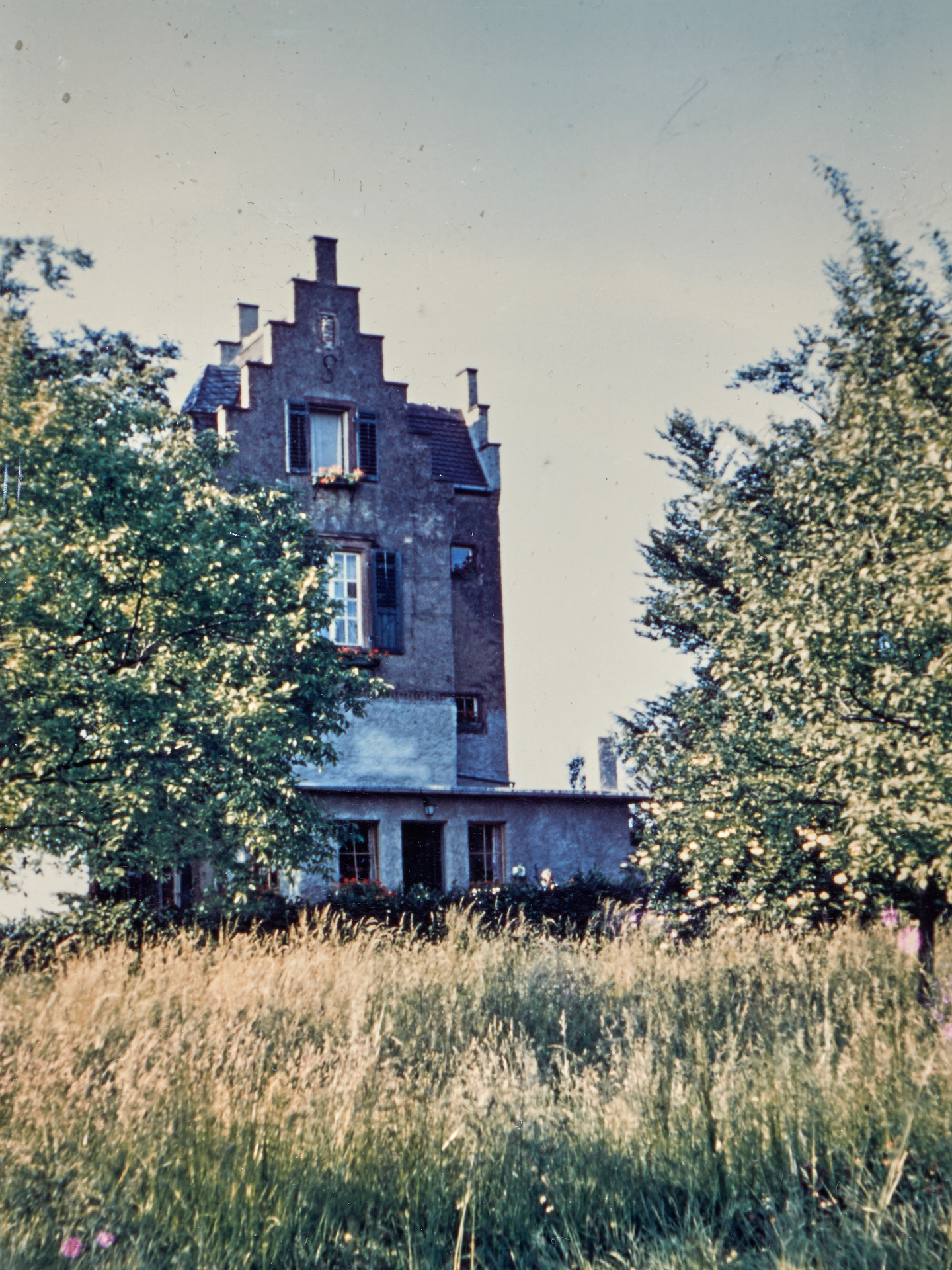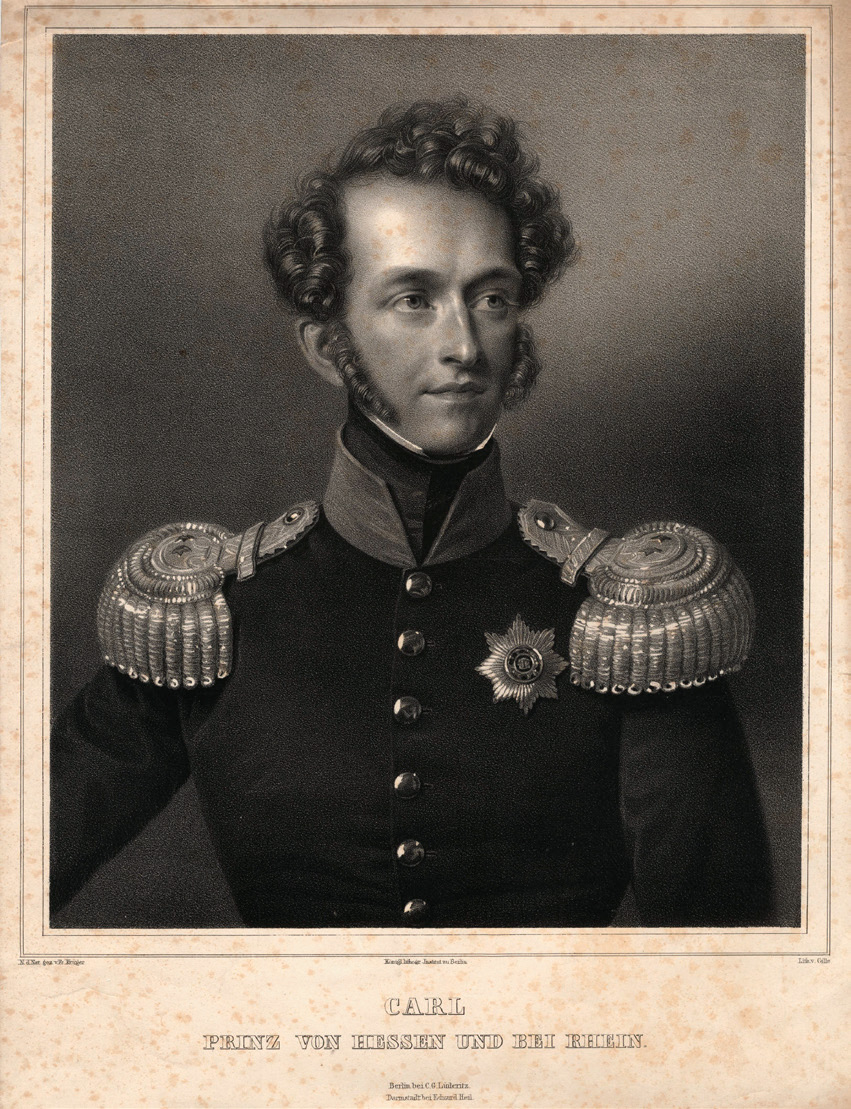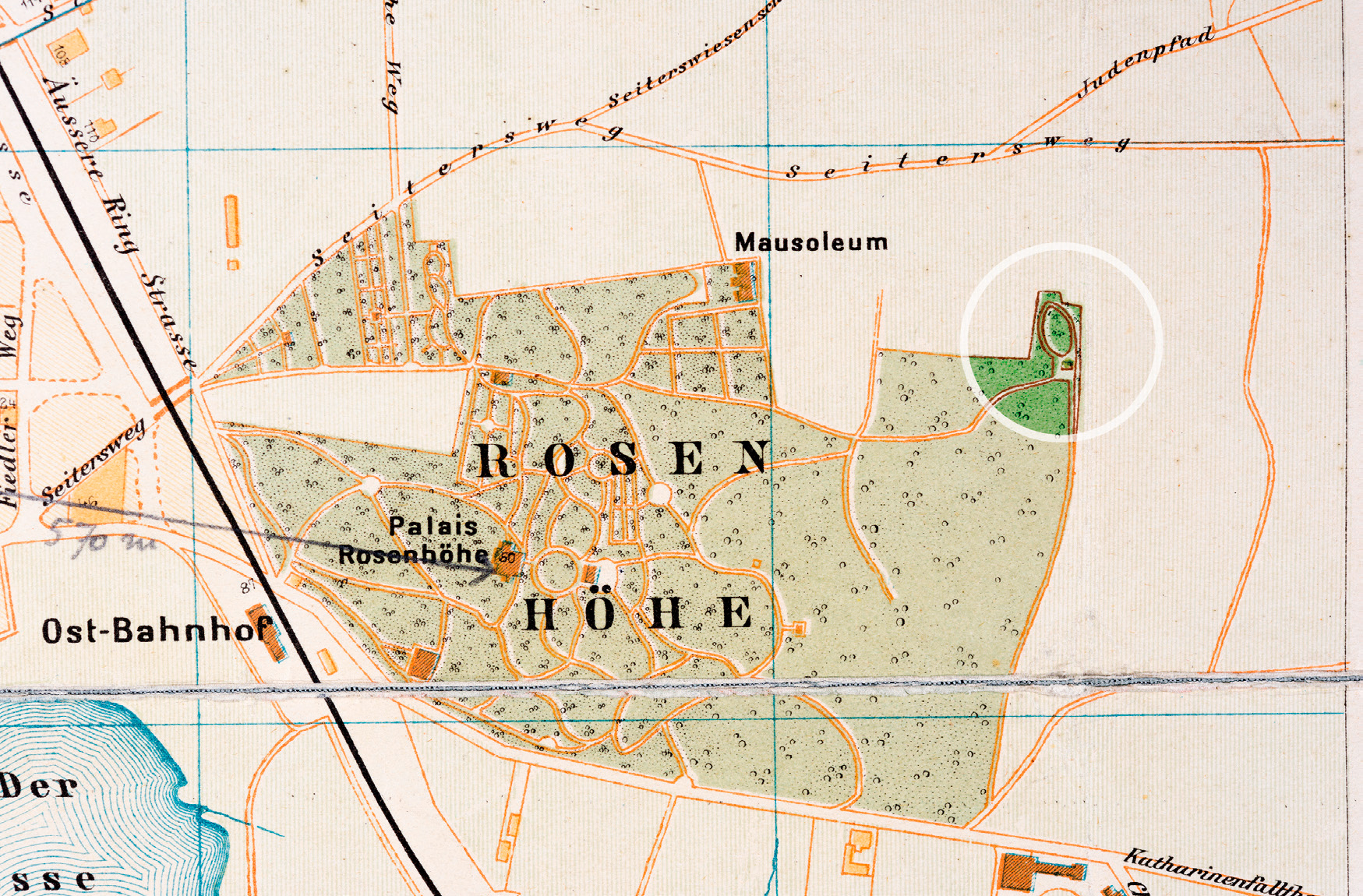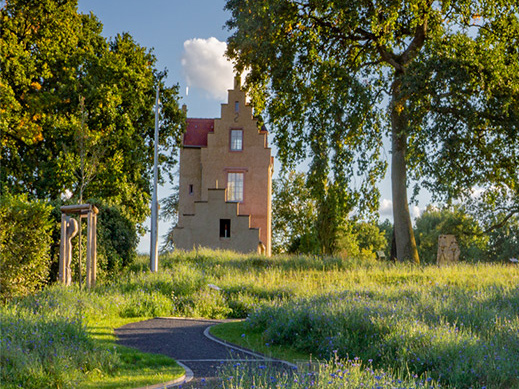The History of the Spanish Tower
The significance of the monument, which was once owned by the Grand Duke, has not yet been conclusively clarified. The first floor of the tower was probably built towards the end of the 18th century. With the addition of two further storeys, the building became a landmark visible from afar, which is still a special attraction on Darmstadt's Rosenhöhe today.
ORIGIN AS AN ARTIFICIAL RUIN
The findings indicate that the approximately 5 m high first floor of the tower was probably built as an artificial ruin in an initial construction phase at the end of the 18th century. Deliberately unfinished, i.e. »artificial« ruins were very popular with the aristocracy at the end of the 18th century as an expression of romantic projections. There is evidence that there were also aristocratic gardens on the Rosenhöhe in Darmstadt that were equipped with these specially erected structures, meaning that one of these buildings could have been identical to the original construction of the Spanish Tower.
EXPANSION IN THE 19TH CENTURY
In 1853, Prince Carl of Hesse, who owned the site at the time, added two more storeys to the base of the tower and added a stair tower. Carl was also responsible for the name »Spanish Tower«, which he referred to as the »Chateau d'Espagne«, i.e. a castle in the air or a place of longing far removed from reality. At the same time, an extensive circular path was laid out in the adjoining garden area, which suggests that the grounds functioned as a pleasure garden and retreat for the princely house.

NEW USE IN THE POST-WAR PERIOD
At the beginning of the 20th century, the tower was redesigned for residential purposes under Grand Duke Ernst Ludwig, which also included an extension with a single-storey annex.
After the Second World War, additional measures were taken to establish a horticultural business. After the horticultural use was discontinued, the area was still partially inhabited, but increasingly fell into disrepair until the BS Kulturstiftung (BS Cultural Foundation) gave it its current purpose.
PRESENT STATE
The basic features of the current design of the ensemble are based on its structural state in the middle of the 19th century. The complex pays homage to the historical model not only by returning the tower to its 1853 appearance, but also by aligning the current pathways with the former princely garden traffic circle.



